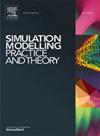云计算中的虚拟机整合步骤:透视回顾
IF 3.5
2区 计算机科学
Q2 COMPUTER SCIENCE, INTERDISCIPLINARY APPLICATIONS
引用次数: 0
摘要
在功能强大的智能设备的广泛使用和云生态系统的扩展推动下,基于云的应用程序、数据和服务的激增极大地改变了数字互动。这些生态系统依赖于由物理机(PM)和虚拟机(VM)组成的数据中心。对云服务日益增长的需求导致物理服务器的广泛使用,造成高能耗和资源利用效率低下。因此,优化资源分配和降低功耗已成为数据中心管理的关键挑战。应对这些挑战的一个关键策略是虚拟机整合(VMC),它通过将多个虚拟机整合到更少的 PM 中来优化计算资源。本文全面回顾了 VMC 所涉及的三个关键阶段:PM 检测、虚拟机选择和虚拟机放置。通过对 2015 年至 2024 年期间的文献进行广泛分析,本综述力图为 VMC 的现状及其对云计算性能和可持续性的潜在影响提供有价值的见解。这些文章的主要缺陷在于,不同作者关注的是不同的评估指标,而重点本应放在 VMC 的三个主要步骤上。这种分类的重要性在于它能够提供清晰度、组织性和结构化框架,以便理解 VMC 的复杂情况。虚拟多媒体中心是一项多方面的工作,包含众多子任务。通过将其分解为易于管理的组成部分,分类简化了这种复杂性。研究人员可以逐一解决每个类别的问题,从而找到重点更突出、更有效的解决方案。本文章由计算机程序翻译,如有差异,请以英文原文为准。
VM consolidation steps in cloud computing: A perspective review
The proliferation of cloud-based applications, data, and services has significantly transformed digital interactions, driven by the widespread use of powerful smart devices and the expansion of cloud ecosystems. These ecosystems rely on data centers composed of Physical Machines (PMs) and Virtual Machines (VMs). The increasing demand for cloud services has led to extensive use of physical servers, resulting in high energy consumption and inefficient resource utilization. Consequently, optimizing resource allocation and reducing power consumption have become pivotal challenges in data center management. A key strategy to address these challenges is Virtual Machine Consolidation (VMC), which optimizes computing resources by consolidating multiple VMs into fewer PMs. This paper comprehensively reviews the three critical phases involved in VMC: PM detection, VM selection, and VM placement. Through an extensive analysis of literature spanning from 2015 to 2024, this review seeks to provide valuable insights into the current landscape of VMC and its potential ramifications on the performance and sustainability of cloud computing. The main flaw in the articles is that the various authors focused on different assessment metrics when the emphasis should have been on the three primary steps in VMC. The importance of this categorization lies in its ability to provide clarity, organization, and a structured framework for comprehending the intricate landscape of VMC. VMC is a multifaceted undertaking encompassing numerous subtasks. Categorization simplifies this complexity by breaking it down into manageable components. Researchers can address each category individually, potentially leading to more focused and effective solutions.
求助全文
通过发布文献求助,成功后即可免费获取论文全文。
去求助
来源期刊

Simulation Modelling Practice and Theory
工程技术-计算机:跨学科应用
CiteScore
9.80
自引率
4.80%
发文量
142
审稿时长
21 days
期刊介绍:
The journal Simulation Modelling Practice and Theory provides a forum for original, high-quality papers dealing with any aspect of systems simulation and modelling.
The journal aims at being a reference and a powerful tool to all those professionally active and/or interested in the methods and applications of simulation. Submitted papers will be peer reviewed and must significantly contribute to modelling and simulation in general or use modelling and simulation in application areas.
Paper submission is solicited on:
• theoretical aspects of modelling and simulation including formal modelling, model-checking, random number generators, sensitivity analysis, variance reduction techniques, experimental design, meta-modelling, methods and algorithms for validation and verification, selection and comparison procedures etc.;
• methodology and application of modelling and simulation in any area, including computer systems, networks, real-time and embedded systems, mobile and intelligent agents, manufacturing and transportation systems, management, engineering, biomedical engineering, economics, ecology and environment, education, transaction handling, etc.;
• simulation languages and environments including those, specific to distributed computing, grid computing, high performance computers or computer networks, etc.;
• distributed and real-time simulation, simulation interoperability;
• tools for high performance computing simulation, including dedicated architectures and parallel computing.
 求助内容:
求助内容: 应助结果提醒方式:
应助结果提醒方式:


